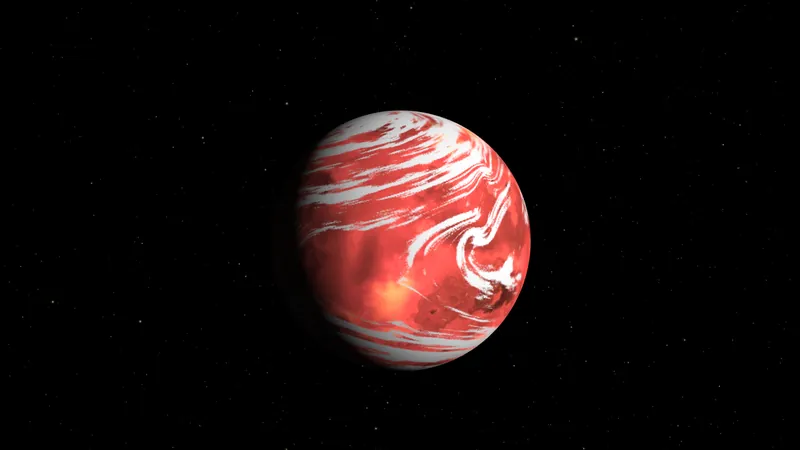
Could This Nearby Exoplanet Unlock the Secrets of Alien Atmospheres?
2025-04-09
Author: Arjun
Exciting news is on the horizon! A nearby Earth-sized exoplanet might soon emerge as a key player in the ongoing quest to understand atmospheres beyond our solar system. Enter L 98-59 c, a hot and rocky world slightly larger than our own, orbiting a bright star just 35 light-years away.
First spotted in 2019, this captivating planet is back in the spotlight due to fresh analysis from Hubble Space Telescope observations. New findings suggest that L 98-59 c could very well host its own atmosphere, making it a pioneering candidate among terrestrial worlds for confirmed "air" presence.
The First of Its Kind?
If these findings hold true, L 98-59 c could become the first planet under two Earth radii to have its atmosphere definitively detected. This breakthrough could reshape our understanding of how such smaller planets manage to sustain atmospheres in the extreme conditions set by young, fiery stars.
"L 98-59 c could be the trailblazer for planets smaller than 2 Earth radii with a definitively detected atmosphere," emphasized Thomas Barclay, a NASA scientist leading the research team.
An Energetic Star and Its Mysteries
NASA’s TESS (Transiting Exoplanet Survey Satellite) has previously hinted that L 98-59's host star is more active than we thought, bombarding its planetary system with far more energy than our own Sun does to Earth. This makes L 98-59 c a unique opportunity to explore how atmospheres form and evolve under such intense conditions.
In a groundbreaking observation from April 2020, researchers monitored L 98-59 c as it transited its host star, aiming to catch faint spectral signatures that might indicate the presence of an atmosphere. The data revealed a transmission spectrum that wasn’t flat—an encouraging sign that may point to atmospheric components like clouds or hazes.
Cautious Optimism Ahead
However, it’s essential to note that these findings are not yet set in stone. The evidence collected from a single transit, while promising, does limit the conclusions that can be drawn. Disentangling the atmospheric signals from the overwhelming glare of the host star is a significant challenge for astronomers.
Upcoming observations with Hubble, and possibly even the James Webb Space Telescope, are expected to provide further clarity. Will they confirm that the tantalizing signals are indeed atmospheric in nature? Stay tuned as the cosmic mysteries surrounding L 98-59 c unfold!

 Brasil (PT)
Brasil (PT)
 Canada (EN)
Canada (EN)
 Chile (ES)
Chile (ES)
 Česko (CS)
Česko (CS)
 대한민국 (KO)
대한민국 (KO)
 España (ES)
España (ES)
 France (FR)
France (FR)
 Hong Kong (EN)
Hong Kong (EN)
 Italia (IT)
Italia (IT)
 日本 (JA)
日本 (JA)
 Magyarország (HU)
Magyarország (HU)
 Norge (NO)
Norge (NO)
 Polska (PL)
Polska (PL)
 Schweiz (DE)
Schweiz (DE)
 Singapore (EN)
Singapore (EN)
 Sverige (SV)
Sverige (SV)
 Suomi (FI)
Suomi (FI)
 Türkiye (TR)
Türkiye (TR)
 الإمارات العربية المتحدة (AR)
الإمارات العربية المتحدة (AR)